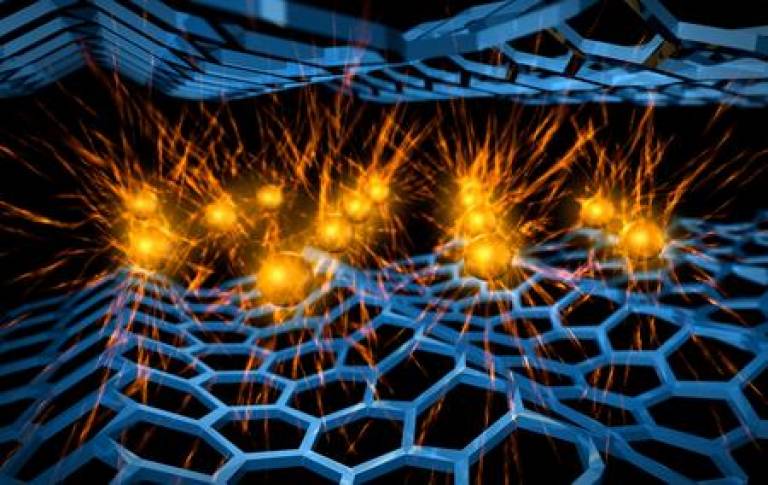A potential way to make graphene superconducting
31 March 2014

Scientists from the Department of Physics & Astronomy at UCL and the London Centre for Nanotechnology have discovered a potential way to make graphene - a single layer of carbon atoms with great promise for future electronics - superconducting. The study, performed in collaboration with Stanford University and the SLAC National Accelerator Laboratory is published in Nature Communications.
Graphene, a single sheet of carbon atoms arranged in a honeycomb pattern, is the thinnest and strongest known material and a great conductor of electricity, among other remarkable properties. Scientists hope to eventually use it to make ultra fast transistors, sensors and transparent electrodes. Despite its array of exciting properties, superconducting graphene, in which electricity is conducted without resistance, is yet to be achieved.
 Close
Close




